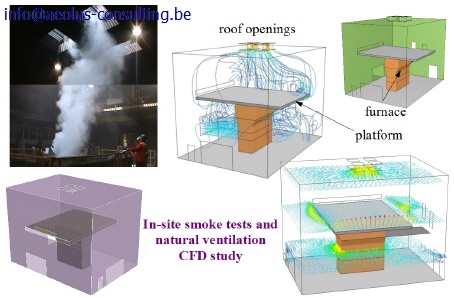Industrial Flows
Computational Fluid Dynamics (CFD) can be used to study the behaviour of fluids within any industrial design, for instance ducts and pipes, plenums, heat exchangers, HVAC systems, manifolds and exhausts systems.
Mixing gases at T junction pipes
A very simple mixing device (to mix up hot and cold flows, or 2 materials with different properties) is a T junction. The two streams are coming together in a pipe joint. The mixing of the flow can be simulated to quantify the mixing efficency and pressure losses, and to identify possible improvements of the system.
A mesure of the degree of mixing uniformity can be the co-efficient of variation (COV) of a certain quantity (the mass fraction of a material or the temperature). This coefficient is defined as the standard deviation over the mean for a given set of data points.

The upper slide shows CFD results on a complex piping system. A steady state RANS simulation showed the same flow pattern at the junction as the one described in the litterature by Fric and Roshko (1994). 2 Counter rotating vortices are created in the region of the junction.
HVAC in an Industrial Environment
CFD can be used for HVAC application as well. Simulations help to improve the ventilation and the confort of workers in an industrial environment for example.


